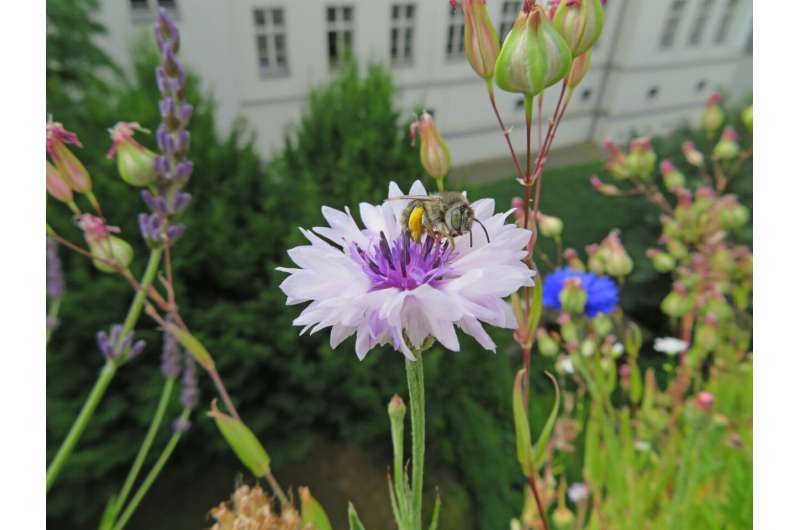This article has been reviewed according to Science X's editorial process and policies. Editors have highlighted the following attributes while ensuring the content's credibility:
fact-checked
peer-reviewed publication
proofread
Global analysis on pollinators in cities: Wild bees and butterflies are at particular risk

Butterflies are being hit hardest by urban growth. Shrinking habitats and food availability are causing their populations to decline. The same applies to many wild bees that fly early in spring.
According to a new study by the Martin Luther University Halle-Wittenberg (MLU) and the Chinese Academy of Sciences in Ecology Letters, pollination has not yet been impacted by this because honey bees, for example, can compensate for the reduction of urban pollinators. The study is the first comprehensive analysis of the subject and includes data from 133 studies. The results underline the importance of nature conservation measures in urban areas.
Cities are expanding all over the world, and this is having a significant impact on the habitats of many animal species. The result: impervious surfaces, a reduction in plant diversity and more environmental pollution, such as light and air pollution. Pollinators, whose work is essential for a thriving ecosystem and hence human food security, are particularly affected.
"There are many studies that have examined the relationship between urbanization, pollinators and pollination performance and have found negative effects. Because this work is very complex and time-consuming, the studies are usually limited to specific cities or regions," explains biologist Dr. Panagiotis Theodorou from MLU. In order to obtain a global overview, he and researchers from the Chinese Academy of Sciences analyzed data from 133 individual studies that looked at how urban growth impacts pollinators and their pollination performance. The analysis takes into account all of the Earth's continents, with the exception of Antarctica.
The results paint a clear picture: "As urbanization increases, the abundance and biodiversity of many pollinators decrease," says Theodorou.
However, certain groups are more affected than others. The team found that butterflies were the most negatively impacted. "Butterflies are particularly susceptible to changes in their environment. They depend on very specific plants for their nutrition and larval development. Since these are found less and less in cities, the populations of many butterfly species are also declining," explains Dr. Huan Liang from Wuhan Botanical Garden, Chinese Academy of Sciences.
Also particularly affected are pollinators that are already active in early spring and feed on the nectar and pollen of early flowering plants. Wild bees that nest in the ground often lack suitable breeding sites in cities and their populations are declining. Less affected, on the other hand, are wild bees that nest above ground, in cavities or insect hotels.
However, the studies show that the declining numbers do not necessarily result in a decrease in pollination performance. Pollinators still regularly pollinate plants, which produced enough seeds to propagate. According to the researchers, this is mainly due to honey bees, which together with bumble bees, compensate for the reduction in urban pollinator diversity.
"Honey bees are very productive and are kept by hobby beekeepers in many places," says Liang. While this is good for urban plants, it can negatively impact other pollinators because honey bees often displace other native pollinators and can transmit diseases to wild pollinators.
The study provides important information to protect biodiversity and for sustainable urban development. The analysis shows, for example, that cities with a greater diversity of flowers are usually home to more and many different types of pollinators. "If we design our cities better in terms of what they offer to pollinators, we can at least compensate for some of the negative consequences of urban growth," concludes Panagiotis Theodorou.
More information: The effects of urbanisation on pollinators and pollination: A meta-analysis, Ecology Letters (2023). DOI: 10.1111/ele.14277
Journal information: Ecology Letters
Provided by Martin-Luther-Universität Halle-Wittenberg




















